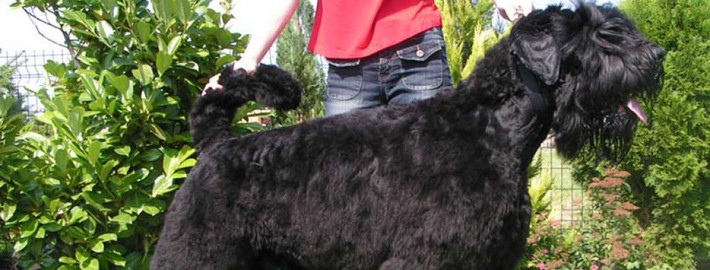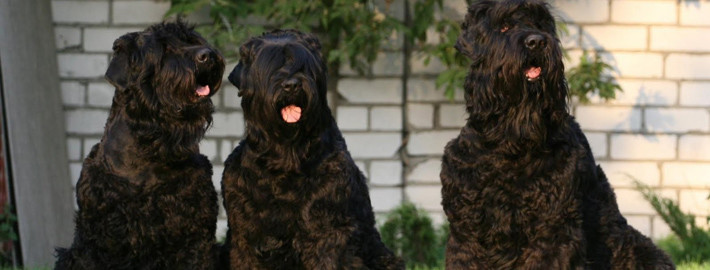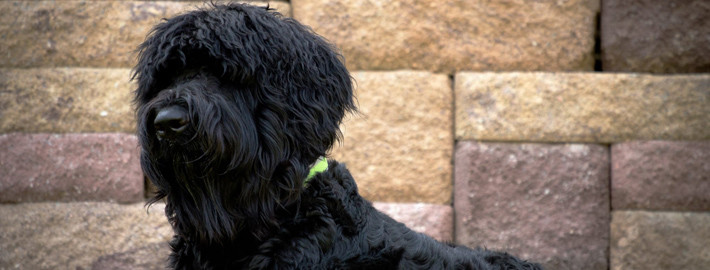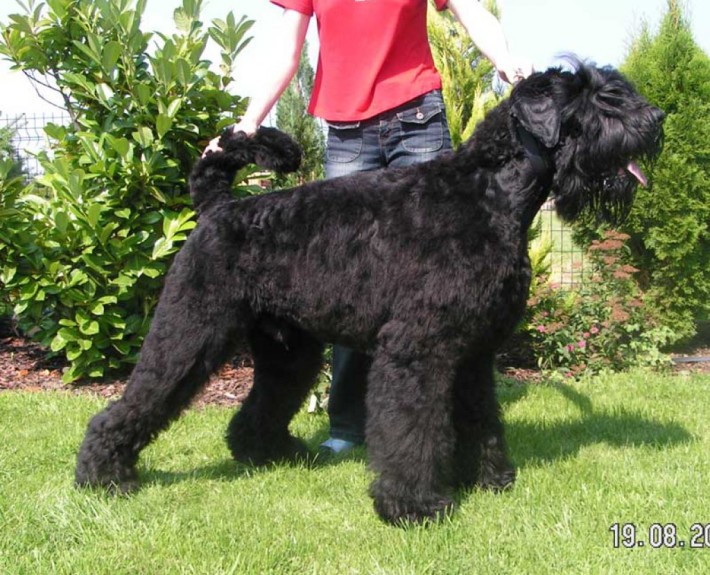What makes the Black Russian Terrier Unique?
Although these intelligent dogs were originally bred for police work, Black Russian Terriers make wonderful family pets. Members of this breed are easily trained and great with children. Their placid temperaments and hardworking natures have won these dogs many admirers throughout the world.
Breed Groups
- Working Dog Breed
- Larger Size
Page Contents
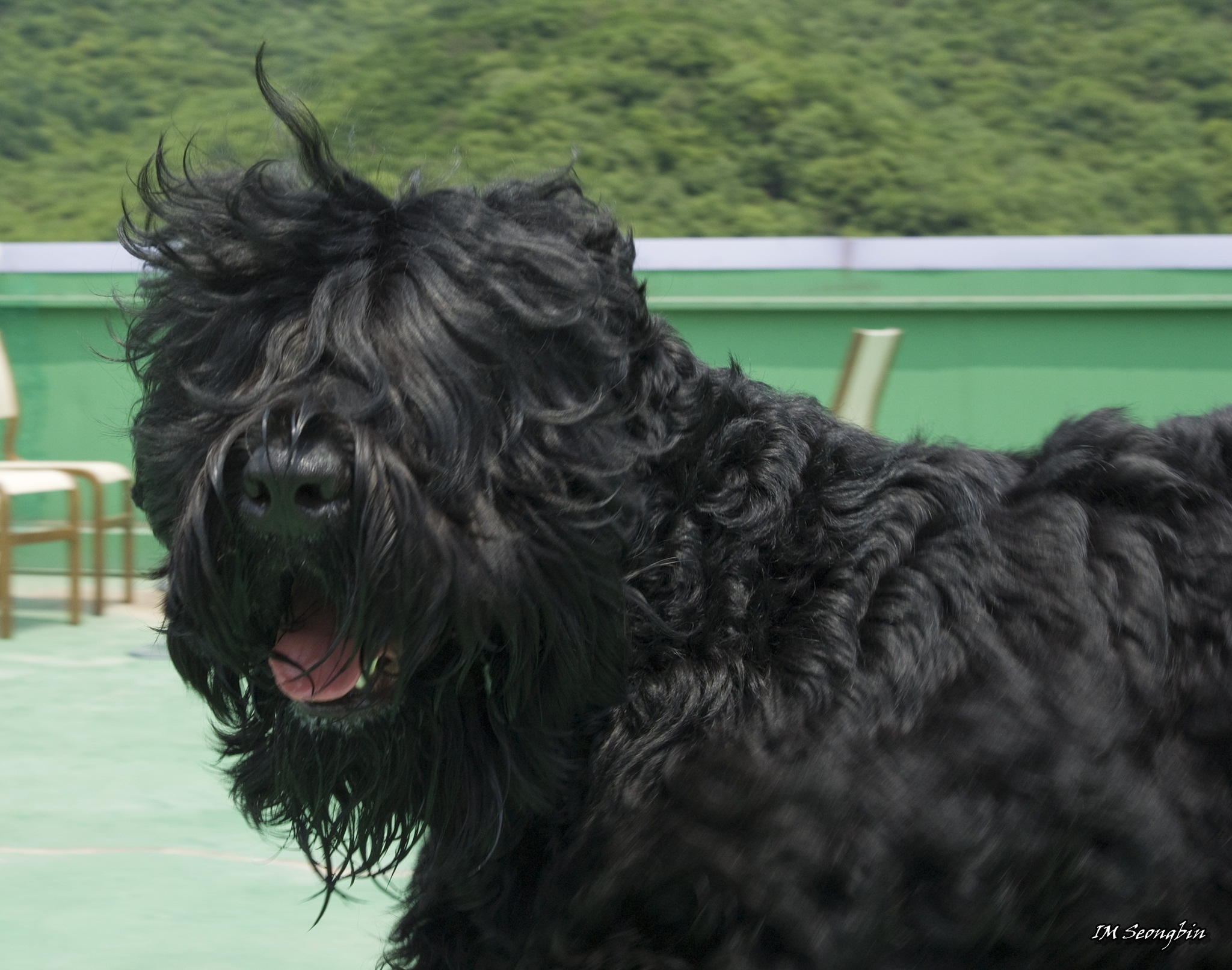
Is the Black Russian Terrier Right For You?
BRTs can be wonderful dogs with children. They can be very gentle and quite tolerant of children. They will protect their children. But you must remember that your BRT will outweigh most children, play roughly, and could injure a small child just with rough play. Please make sure that you supervise and train your children to respect and treat the dog well. If you have very small children who are just learning to walk, you may want to wait until they are older before getting a BRT. BRTs are territorial dogs. They are dogs that can be good with other dogs and with cats as long as they have had good experiences with them, but even training and socialization will not guarantee their acceptance of other animals. Do not get this dog assuming that it will fit in with an existing group of dogs. Many of them will, but some are dog aggressive. If you have an adult male dog already and you are getting a new puppy, you should consider a female BRT and vice versa. This is not to say that two males cannot get along but males especially have a tendency to want to dominate each other. We do not recommend placing two males together who are close in age. We also suggest that if you have existing pets in the family that you bring a puppy into the home rather than an adult.
In 5 Words
- Lively
- Energetic
- Confident
- Stable
- Brave
Characteristics
Learn About the Black Russian Terrier
General Description
These robust dogs are large, powerful, and athletic. Black Russian Terriers should be slightly longer than they are tall and well muscled. These dogs should have wide-set black eyes and a strong, tapered muzzle with a black nose. Black Russian Terriers have high set, triangular ears. Their heads should be in proportion to their bodies and their teeth should meet in a scissors bite. These dogs have thick necks, strong bodies, and dense double coats. Thier tails are carried somewhat high at a 45 degree angle.
Size
Male dogs can measure between 27 and 30 inches at the withers. However, the ideal height for show dogs is between 27 and 29 inches. Female dogs can similarly be up to 29 inches tall, but the preferred height for show dogs is between 26 and 28 inches.
Coat
Black Russian Terriers come with coats that are either black or salt and pepper in color. Their coats should vary from 1.5 to 4 inches in length because longer fur can inhibit the breed’s working ability. These dogs also have a waterproof outer coat that will repel water and an undercoat that serves to protect them from the cold.
Short History of the Black Russian Terrier
Despite the fact that the first World War and the Russian Revolution had depleted Russia’s stock of purebred dogs, there was nonetheless a desire for animals that could be part of the nation’s security forces. In the 1930s, the Red Star Kennel near Moscow began trying to breed dogs to fulfil this growing need. The program really got underway once World War II was over.
A total of 17 different breeds were used in the creation of the Black Russian Terrier, including Giant Schnauzers, Rottweilers, Airedales, and Newfoundlands. The Black Russian breed was created to be large, reliable, and resistant to the harsh Russian winters. Initially, these dogs were used by military police for various purposes.
Around 1956, these dogs began breeding true to type and were therefore released to the public. Two years later, a breed standard was developed by the Red Army and it went through many different revisions as time progressed. Black Russian Terriers were officially recognized by the Federation Cynologique Internationale (FCI) in 1984, though the Russian Ministry of Agriculture had given them official status three years prior.
By the 1980s, the Black Russian Terriers had made their way to the United States. This breed was admitted to the American Kennel Club (AKC)’s Miscellaneous Class in 2001. Three years later, the Black Russian Terrier was accepted by the same organization as a working breed.
Temperament
Black Russian Terriers are alert, responsive, and courageous. These calm creatures are incredibly loyal and have the endearing habit of shadowing their family members. These dogs are also especially good with children. However, due their large size, Black Russian Terriers are not recommended for families with toddlers or small children because the dogs may accidentally knock the youngsters over.
This breed tends to be wary of strangers. Black Russian Terriers will need proper socialization from an early age so that they are accurately able to determine what is a threat and what is not. As a general rule, these dogs tend to be accepting of their family’s smaller dogs and cats but may not behave kindly towards strange animals. Some Black Russian Terriers are nonetheless dog aggressive. To avoid future difficulties, prospective owners who already have other pets should adopt a puppy that is the opposite gender of their alpha dog.
Caring for Your Black Russian Terrier
General Health
The Black Russian Terriers are generally healthy dogs but, as with any other breed, there are a number of health concerns of which prospective owners need to be aware. Black Russian Terriers are prone to hip dysplasia, elbow dysplasia, hyperuricosuria, and progressive retinal atrophy (PRA). In order to avoid these problems, it is best to purchase puppies from reputable breeders.
Grooming & Bathing
These dogs should be bathed once every two to three months to keep them looking their best. They will also need two to three haircuts per year.
Daily
This highly active and athletic breed needs two 20 minute walks per day. These dogs enjoy walking at a brisk pace but will happily jog or run alongside their owners. Black Russian Terriers will greatly benefit from participation in dog sports such as agility, obedience, rally, or tracking. A fenced in area for the dogs to play in is also recommended. The fence will need to be at least six feet in height to keep this breed from escaping. Electronic fences are not recommended for Black Russian Terriers.
Weekly
Black Russian Terriers should be brushed at least once a week to keep shedding down to a minimum. It is also important to cut the hairs under their paws and remove the hairs from their ear ducts on a regular basis. Owners may additionally want to brush their pet’s teeth a few times a week in order to reduce bad breath and prevent periodontal disease.
Monthly
All dogs require heartworm, flea and tick prevention medication on a monthly basis. Black Russian Terriers should additionally have their nails trimmed once a month.
Exercise & Training
These dogs generally excel at learning basic commands and they are fairly easy to housebreak. Black Russian Terriers will greatly benefit from early socialization and training programs. They also do well with rewards based training. This breed should be allowed to earn treats and new toys rather than being given these things outright, because this will help them learn correct behavior.
Black Russian Terriers nonetheless require strong, consistent leadership from adult members of their human families. These dogs must not be allowed to think they are in charge. They will also need to trust whoever is training them. It is further recommended that Black Russian Terrier owners have previous experience with large breeds.
Information Sources: Previously written materials, Vetstreet, American Kennel Club website

